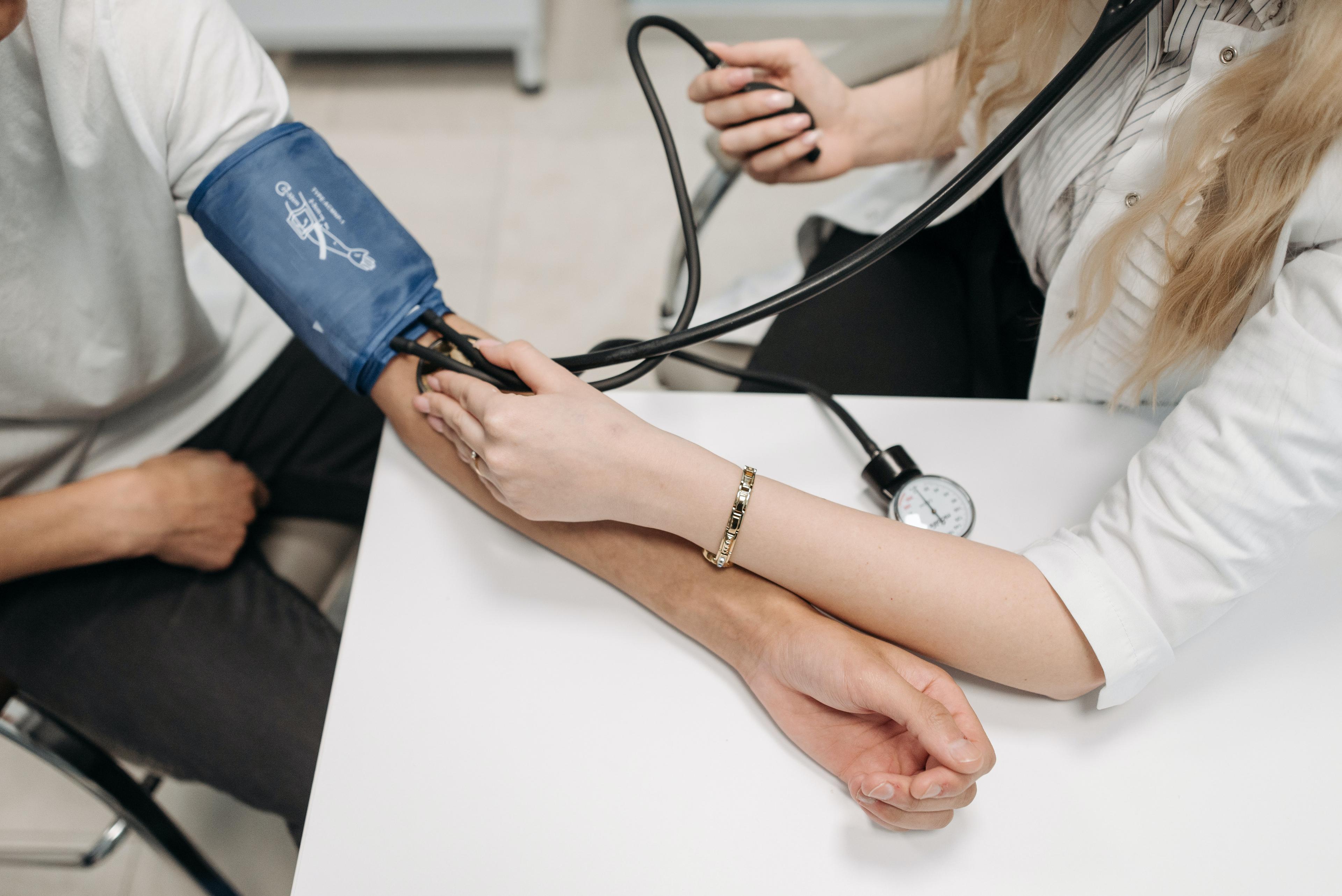How Many PA Schools Should You Apply To? (2025)
Overwhelmed by PA school applications? Learn how many PA schools you should apply to and build a smart list that increases your chances of acceptance.
Posted June 13, 2025

Table of Contents
Free Event

Featuring Pravesh S.
Secondary Essays Decoded: Your Blueprint for Writing Success
Starting Tuesday, September 9
7:00 PM UTC · 60 minutes

Featuring Pravesh S.
Applying to PA school is a big step and one of the first questions you’ll need to think about is how many programs you should apply to. Too few, and you risk rejection. Too many, and the process can quickly become overwhelming. The right number depends on your qualifications, competitiveness, and how flexible you are with location and program type.
In this article, we’ll cover the national average number of PA schools applicants apply to, provide a list of the top 25 PA schools for 2025, and smart application strategies to increase your chances. You’ll get all the information you need to figure out the right number of PA programs to apply to based on your candidacy.
How Many PA Schools Should I Apply To?
There’s no “right” number of schools to apply to, but most experts recommend that you apply to 8-12 programs. This range provides enough options without spreading yourself too thin.
- Applying to fewer than 5 schools can be risky because you have fewer shots on goal. Depending on the competitiveness of your application, the more schools you apply to, the higher your chances are of getting into at least one.
- Applying to 10+ schools increases your chances, but the costs can add up quickly.
- Some applicants apply to 20+ programs to maximize their options, but this requires a lot of time, money, and energy.
So, how do you decide how many to apply to? Consider the cost, your qualifications, and program requirements before finalizing your list.
Factors to Consider When Choosing PA Schools
Your Qualifications & Competitiveness
PA schools have different requirements, and you want to apply where you have a strong chance of acceptance. Look at each school’s average GPA, healthcare experience hours, and GRE or PA-CAT requirements. If your stats are lower than a program’s average, your chances of getting in are lower.
Expert Tip: Using the published stats from previous classes to gauge your chances of success, apply to a mix of “reach”, “target”, and “safety” schools. Reach schools are those that are a bit of a long shot, target schools are those that you should be right on par with, and safety schools are those you should have a really good chance of getting in. Applying to a mix of these schools maximizes your chances of getting into at least one program.
Application Costs
Applying to PA school can be a pricey endeavor. Here’s what you’ll need to budget for:
| Expense | Estimated Cost |
| CASPA Application Fees (First Program) | $179 |
| Additional CASPA Applications | $56 per school |
| GRE or PA-CAT (if required) | $200+ |
| Travel & Interview Costs | $200 - $1,000+ |
| Deposits for Accepted Programs | $500 - $1,500 |
If you apply to 10-15 schools, expect to spend at least $1,000-$2,500 on the applications alone. If you apply to 20+ programs, costs can climb to $3,000+.
When You’re Applying
Timing matters. If you’re applying early in the cycle, you may not need as many applications. Schools review applications on a rolling basis, meaning early applicants have better odds of getting interview invites.
If you’re applying late in the cycle, competition is tougher, so applying to more schools can help increase your chances.
Expert Tip: If you can, apply early to as many schools as you can. If you can’t apply to all of them early, then stagger your applications to apply to the ones you most want to get into first. This gives you the best chances at your top-choice schools.
Your Bandwidth
Each application takes a significant investment in time and energy. Writing personal statements, filling out forms, and preparing for interviews can be overwhelming if you apply to too many programs. Here’s a rough overview of how much the different parts of the application take on average.
Estimated Time Investment
| Application Component | Time Required |
| Researching programs | 2-4 weeks |
| Gathering materials (Transcripts, Letters, etc.) | 2-4 weeks (can overlap with research) |
| Writing the personal statement (CASPA essay) | 3-6 weeks (with editing) |
| Completing supplemental essays (if applicable) | 1-2 weeks per school |
| Requesting letters of recommendation | 4-6 weeks (make sure to give your writers notice) |
| Additional CASPA information | 1-2 weeks |
| Submitting and following up | Ongoing |
Ideal Timeline
Most applicants begin preparing in the fall or winter of the year before they plan to apply, with the CASPA cycle opening in late April and many deadlines between August and October.
- October-January: Research schools, shadowing/clinical hours, prep for GRE (if required)
- February-April: Draft essays, finalize recommenders
- May-June: Submit early applications (remember, early submission = better odds at rolling admissions schools)
- July-October: Send in remaining applications, secondaries
Learn more about the journey of becoming a physician assistant below:
- How to Become a Physician Assistant
- The Most Common Physician Assistant (PA) School Interview Questions – and How to Answer Them
How to Build Your PA School List
Okay – let’s get your PA school list built.
Step 1: Research programs. Every school that you apply to should be one that you actually want to go to. You’ll be dedicating a lot of time and resources to the application – ensuring that you actually want to go there will make that investment worth it. Here are some factors to consider:
- Accreditation Status – Make sure the program is ARC-PA accredited or provisionally accredited. Only graduates from accredited programs are eligible to sit for the PANCE (Physician Assistant National Certifying Exam).
- Location – In-state vs. out-of-state tuition can vary drastically but also consider climate, cost of living, general lifestyle, as well as proximity to family, support systems, or preferred clinical rotation sites.
- Prerequisites & Admissions Requirements – You’ll want to make sure that you are eligible to apply, across test scores, course requirements, required minimum GPA, and required number patient care of healthcare experience hours.
- Cost & Financial Aid – Tuition and fees, scholarships available, and cost of living in the area.
- Program Length & Format – Most programs are 24-36 months. Some include a didactic and clinical year, while others are more integrated. Class schedules can also vary between year-round, intense sprints and breaks, online vs. hybrid. Etc.
- Clinical Rotation Opportunities – Are there certain types of rotations you’re interested in? Are clinical rotations guaranteed through the program or will you need to arrange them?
- PANCE Pass Rate – Most schools publish their first-time PANCE pass rates. While it’s not the only quality metric, a high rate can reflect the strength of the program.
These are just a few of the factors you’ll want to consider. Others include program culture, career outcomes, and what the applications require.
Expert Tip: This is a really important step in the process because the schools that you apply to will directly affect the application process and your lifestyle for 2-3+ years. Take time to carefully consider the different programs and choose ones that are the best fit for you.
Step 2: Build a list of programs that you would be interested in attending. Using the factors above, what is the set of schools that you would actually like to go to, if accepted?
Step 3: Sort into Reach, Target, and Safety schools. Using the class profile stats like GPA, standardized test scores, years of experience, etc., gauge your chances of getting in to sort the schools.
Step 4: Pick 2-4 safety schools, 3-5 target schools, and 3-5 reach schools. Remember: Reach schools are harder to get into but are usually your top choices; target schools are where you meet the average stats and have a solid chance; safety schools are where your stats exceed the average and you have a high chance of acceptance.
Step 5: Note all deadlines, set up your application schedule, and apply! And, of course, get admitted with the help of an expert coach.
Top 10 PA Schools in the US (2025)
- Duke University
- Iowa Carver College of Medicine
- Baylor College of Medicine
- University of Utah
- Emory University School of Medicine
- George Washington University School of Medicine & Health Sciences
- Colorado School of Medicine
- Wake Forest University School of Medicine
- OHSU School of Medicine
- Northwestern Feinberg School of Medicine
These accredited programs have strong reputations and high PA school acceptance rates. However, many PA applicants are accepted to great programs outside this list. A well-planned application process is what truly matters.
Acceptance Rates of PA Programs
PA programs are highly competitive, with average acceptance rates ranging from 5% to 15% depending on the school. According to the Physician Assistant Education Association (PAEA), only about 30% of applicants are accepted to at least one program each cycle.
Acceptance depends on more than just GPA – it also factors in patient care experience, letters of recommendation, personal statement quality, and interview performance, as we’ve discussed. Top programs often receive thousands of applications for fewer than 100 spots, so applying early and strategically can significantly boost your chances.
Read: PA School Acceptance Rates – Breakdown & Analysis
How to Maximize Your Chances of Getting into PA School
1. Go beyond the minimum clinical hour requirements.
Most programs list 1,000-2,000 patient care hours as a target—but competitive applicants often exceed this. More importantly, prioritize roles with direct responsibility (e.g., EMT, paramedic, medical assistant, scribe in high-volume settings). Keep a detailed log of hours, skills used, and key takeaways—you can draw on this in essays and interviews.
Expert Tip: Admissions committees value clinical maturity. Shadowing a PA in your intended specialty and reflecting on that experience in your personal statement or secondaries can give you an edge.
2. Tailor your personal statement for the PA profession.
Avoid writing a generic healthcare essay. Your personal statement should show a clear understanding of the PA role, how it differs from other medical careers, and why/how it fits your long-term goals. Show that this is the best career for you and that you will excel. Your personal statement should not be a regurgitation of your resume. Use your life stories, experiences with patients, etc. to show – not just tell – your growth, compassion, and insight into the profession.
3. Leverage Secondaries to Show Fit
Many applicants rush through supplemental essays or reuse the same answer. This is a missed opportunity. Demonstrating school-specific fit – like referencing their mission, clinical affiliations, or focus on underserved populations – can make a major difference. Create a matrix of your top 5 schools with their mission, core values, and standout features. You can use this to personalize each secondary with precision.
4. Choose Recommenders Strategically
Letters of recommendation should come from people who know your character and work ethic firsthand – ideally a PA you’ve worked with directly, a healthcare supervisor, and a science faculty member. A generic letter from a big-name doctor won’t help; you want someone that knows you really, really well and is excited to be your advocate.
Expert Tip: Prep your recommenders with a tailored “brag sheet” outlining your goals, accomplishments, and why you’re applying to PA school. This ensures stronger, more specific letters. You can also give them your personal statement and/or resume so they understand how their letters are playing into the broader application.
The Bottom Line
There’s no perfect number of PA programs to apply to – it completely depends on your timeline, budget, application competitiveness, dream schools, and many other factors. Most candidates choose to apply to 8-12 programs, including a mix of reach, target, and safety schools. The key is to apply smart and choose programs that actually fit your qualifications, goals, budget, and preferred lifestyle.
If you’re serious about the PA profession, be strategic. Apply to multiple PA programs, focus on competitive but achievable choices, and make sure your application process is strong. With the right approach, you’ll increase your chances of becoming a physician assistant. Also work with an expert PA admissions coach who can help you prepare the strongest possible candidacy and increase your chances of admission to your dream programs. Below are several popular PA coaches, browse them all here.
FAQs
How competitive is PA school admissions?
- PA school admissions can be highly competitive. The number of applicants continues to rise, and many programs have low PA school acceptance rates. Strong GRE scores, clinical experience, and a high undergraduate degree GPA can improve your chances.
What is the average overall GPA needed for PA school?
- The average overall GPA for accepted students is around 3.5-3.6. However, many top PA programs expect a science GPA of 3.4 or higher. If your GPA is lower, strong clinical experience or excellent GRE scores can help balance your application.
How many PA schools should I apply to?
- Most PA applicants apply to 8–12 schools, but some apply to 15 or more to increase their chances. Applying to multiple PA programs can help, but it's best to choose accredited programs where you meet or exceed the average overall GPA and admission requirements.
Do all the schools have the same admission requirements?
- No, PA schools require different prerequisites. Some emphasize GRE scores, while others focus more on healthcare experience. It's important to research all the schools you're interested in to make sure you meet their PA school admissions criteria.
What are my chances of getting into PA school?
- Your chances depend on factors like GPA, healthcare experience, and test scores. The nation’s gain acceptance rate for PA school admissions is around 30–40%, meaning a strong application is crucial. Competitive applicants have a well-rounded profile with strong academics, clinical experience, and compelling personal statements.
Do I need a specific undergraduate degree to apply?
- You don’t need a specific undergraduate degree, but most PA programs require coursework in biology, chemistry, and anatomy. Many PA students come from science-related majors, but applicants from other backgrounds can still qualify by completing the required prerequisites.
Can I get into PA school with a low GPA?
- It’s possible, but difficult. If your average overall GPA is below 3.0, most PA schools require you to retake prerequisite courses to improve your academic record. Strong GRE scores, clinical hours, and a well-written personal statement can also help balance a lower GPA.











